1. Vision of a Tobacco-Free India – Strengthening Control Measures – Polity
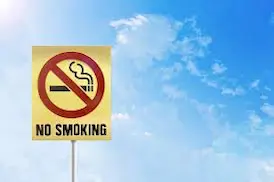
Why in News?
- The economic burden of tobacco use in India is alarming:
- ₹1,773.4 billion (1.04% of GDP) – annual cost of tobacco use (2017 estimates, for age 35+).
- ₹566.7 billion (0.33% of GDP) – costs due to second-hand smoke exposure.
These figures highlight the urgent need to review and strengthen tobacco control policies to achieve the vision of a Tobacco-Free India.
Key Takeaways
1. Current Legal Framework
- COTPA, 2003 (Cigarettes and Other Tobacco Products Act) – regulates advertising, sale, and packaging.
- Ban on E-Cigarettes (2019) – prohibits production, import, and sale.
- National Tobacco Control Programme (NTCP) – awareness, cessation services, enforcement support.
2. Gaps in Existing Legislation
- Inadequate Coverage of Smokeless Tobacco (SLT)
- Widely consumed (gutka, khaini, pan masala).
- Higher cancer risk, but weak enforcement compared to cigarettes.
- Surrogate & Indirect Advertising
- Tobacco companies use brand stretching (e.g., pan masala, mouth fresheners).
- Loopholes weaken ban effectiveness.
- Weak Fiscal Measures
- Taxation well below WHO recommendation of 75%:
- Bidis: 22%
- Cigarettes: ~50%
- Leads to affordability, especially for poorer populations.
- Taxation well below WHO recommendation of 75%:
- Ineffective Warning Labels
- Over-reliance on fear-based images; limited impact.
- Need for comprehensive health education.
- Poor Enforcement of E-Cigarette Ban
- Growing popularity among adolescents due to weak monitoring.
3. Limitations of Current Programmes
- NTCP:
- Limited coverage; cessation clinics inadequate.
- Does not address social determinants (poverty, peer influence).
- ToFEI (Tobacco Free Education Institute):
- Lacks scientific rigor compared to global models like CDC (USA).
- Campaigns need evidence-based, behavior-oriented communication.
4. Need for a Holistic Approach
- Stronger Laws: Close loopholes in advertising and surrogate branding.
- Tax Reforms: Increase tobacco taxes substantially (especially bidis).
- Awareness Campaigns: Use behavioral insights, school-based interventions, and community role models.
- Independent Oversight Body: To monitor tobacco industry practices.
- Research & Data: Real-time consumption data for policymakers.
- Tobacco Endgame Strategy: Gradual elimination of tobacco products (as adopted in New Zealand’s 2025 plan).
Comparative Insights
- New Zealand: “Smokefree 2025” goal by reducing nicotine content & banning sales to future generations.
- Thailand: Strict advertising ban, high taxation.
- U.S. CDC model: Evidence-based, community-driven campaigns.
India can adopt a multi-pronged strategy combining laws, taxation, education, cessation services, and social support.
Exam Connect – Possible Questions
Prelims
- Which Act serves as India’s primary legal framework for regulating tobacco products?
A. NDPS Act, 1985
B. COTPA, 2003
C. Drugs and Cosmetics Act, 1940
D. Public Health Act, 2010
Answer: B. COTPA, 2003
- According to WHO, what should be the minimum recommended taxation level on tobacco products to effectively reduce consumption?
A. 30%
B. 40%
C. 60%
D. 75%
Answer: D. 75%
- Which of the following are considered forms of Smokeless Tobacco (SLT)?
1. Gutka
2. Khaini
3. Pan Masala
4. CigarettesOptions:
A. 1, 2, 3 only
B. 2 and 4 only
C. 1 and 4 only
D. 1, 2, 3, 4
Answer: A. 1, 2, 3 only
Mains
- “Tobacco use is not just a health crisis but also an economic burden.” Examine India’s current tobacco control measures and suggest reforms needed to achieve a tobacco-free India.
- Discuss the challenges in implementing the COTPA, 2003 effectively across India. How can taxation, education, and community engagement be combined for better outcomes?
- Critically analyse India’s tobacco control framework in comparison with international best practices. What lessons can India adopt from global models like New Zealand’s Tobacco Endgame?
2. Uses of Wastewater Surveillance – Environment
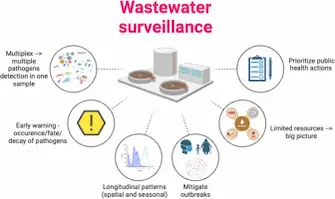
Why in News?
The Indian Council of Medical Research (ICMR) is set to expand wastewater surveillance to 50 cities in the next six months, monitoring 10 viruses including those causing COVID-19, polio, influenza, diarrheal, and respiratory diseases.
- Currently operational in 5 cities.
- Aim: Early warning system for infectious diseases, enabling timely interventions.
Key Takeaways
1. What is Wastewater?
- Definition: Any water affected by human use (domestic, industrial, agricultural).
- Must be treated before release or reuse.
- Rich in biological and chemical signatures of community health & activities.
2. Wastewater-Based Epidemiology (WBE)
- Technique of testing untreated sewage for pathogens, chemicals, and pollutants.
- Individuals shed pathogens (even asymptomatic) via urine, stool, and secretions.
- Detection window: Within 5–7 days, labs can detect rising infections.
3. Applications of Wastewater Surveillance
| Area | Uses |
|---|---|
| Public Health | Early detection of outbreaks (COVID-19, polio, avian flu, diarrheal & respiratory viruses) |
| Epidemiology | Tracks trends of infections across large populations |
| Resource Allocation | Identifies hotspots → better targeting of vaccines, medicines, healthcare |
| Non-Invasive Monitoring | No individual testing required → covers entire communities |
| Environmental Protection | Detects pollution sources → helps manage ecosystems & water quality |
| Global Relevance | WHO & UNEP advocate wastewater monitoring as part of sustainable health-environment strategy |
4. Global Practices
- CDC (USA): Used wastewater to track COVID-19 and new variants.
- Polio Monitoring: Ongoing in many countries for decades (early detection of wild poliovirus).
- UNEP: Advocates expanding wastewater surveillance for ecosystem health.
- WHO: Strengthening global wastewater monitoring capacities.
5. Significance for India
- Rising urbanization, population density, and zoonotic risks → frequent outbreaks.
- Low-cost, scalable method suitable for India’s resource-constrained settings.
- Integrates with Ayushman Bharat, Health ID, and One Health Approach.
- Helps meet SDG 3 (Good Health) and SDG 6 (Clean Water and Sanitation).
Challenges
- Infrastructure gaps in sewage treatment plants (STPs).
- Need for trained workforce & labs for real-time testing.
- Issues of data privacy & ethics (community-level data).
- Uneven state-level implementation.
Way Forward
- Integrate wastewater surveillance into routine disease surveillance (IDSP).
- Strengthen urban wastewater networks under AMRUT 2.0 & Jal Jeevan Mission.
- Encourage public-private partnerships in monitoring.
- Develop AI-driven dashboards for early-warning alerts.
- Expand to industrial pollutants & antimicrobial resistance (AMR) genes.
Exam Connect – Possible Questions
Prelims
- Which of the following best describes Wastewater-Based Epidemiology (WBE)?
A. Testing treated drinking water for purity
B. Using sewage samples to detect pathogens and pollutants at community level
C. Monitoring rainfall patterns for disease outbreaks
D. Estimating groundwater recharge through wastewater channels
Answer: B. Using sewage samples to detect pathogens and pollutants at community level
- Which international organization advocates expanding wastewater surveillance for improving water quality monitoring?
A. WTO
B. UNEP
C. ILO
D. UNESCO
Answer: B. UNEP
- Wastewater surveillance can be used for which of the following?
1. Early detection of viral outbreaks
2. Monitoring antimicrobial resistance (AMR)
3. Identifying industrial pollution
4. Tracking vaccination effectiveness
Options:
A. 1 and 2 only
B. 1, 2, 3 only
C. 1, 2, 3, 4
D. 2 and 4 only
Answer: C. 1, 2, 3, 4
Mains
- “Wastewater surveillance is emerging as a cost-effective, non-invasive tool for public health management.” Discuss its applications and limitations in the Indian context.
- How can Wastewater-Based Epidemiology (WBE) complement India’s existing disease surveillance systems? Suggest a roadmap for its large-scale adoption.
- Wastewater surveillance offers dual benefits for public health and environmental protection. Critically analyze its role in achieving India’s SDG targets.
3. Removal of Ministers Under Serious Charges – 130th Constitution (Amendment) Bill, 2025 – Polity

Why in News?
The Central Government has introduced the 130th Constitution (Amendment) Bill, 2025 in the Lok Sabha.
- Aim: To mandate removal of Ministers (including PM, CMs, and state/UT Ministers) who are arrested and detained for 30 consecutive days on serious criminal charges (offences punishable by 5 years or more).
Key Features of the Bill
- Amendments proposed to Articles 75, 164, 239AA (Union, State, UT Ministers).
- Automatic removal clause: Ministers in custody for 30 days must be removed by the President (or Governor/Lt. Governor) on advice of PM/CM.
- Reinstatement allowed: If released from custody, a Minister can be reappointed.
- Objective: To uphold constitutional morality, accountability, and public trust in governance.
Current Legal Framework
- No automatic removal of Ministers on arrest/detention.
- Disqualification under RPA, 1951 (Section 8):
- Legislators (including Ministers) are disqualified only after conviction, not during trial or arrest.
- Conviction under Prevention of Corruption Act, 1988 → disqualification for imprisonment + 6 years after release.
- Presumption of Innocence: Arrest is not equal to guilt → Ministers can remain in office until conviction.
Judicial Pronouncements
- Public Interest Foundation v. Union of India (2018)
- SC: Cannot add new disqualification grounds beyond Parliament’s law.
- Parliament alone can legislate on this.
- Manoj Narula v. Union of India (2014)
- SC: No legal bar on appointing Ministers with criminal records.
- But advised PM/CM to avoid appointing those facing serious charges.
- V. Senthil Balaji Case (2025)
- SC: Minister in custody should choose between freedom or office.
- Highlighted risk of misuse of office during ongoing investigations.
- Arvind Kejriwal Case (2024)
- SC: Granted bail but restricted him from performing official duties.
- Later resigned voluntarily → reflected moral accountability.
Why the Reform is Needed
- Criminalisation of Politics:
- ADR Report 2025 → 45% MLAs have criminal cases, 29% serious offences (murder, kidnapping, crimes against women).
- Existing framework allows them to retain ministerial posts for years due to judicial delays.
- Conflict of Interest: Ministers hold executive power that can influence investigations against them.
- Erosion of Public Trust: Citizens lose faith in governance when tainted leaders remain in office.
- Global Democratic Standards: Other democracies (e.g., UK, Canada) have codes of conduct requiring Ministers to step down if under investigation.
Measures Needed for Strengthening Accountability
- Legal & Constitutional Reforms
- Clear provisions for temporary removal when charges are framed for serious offences.
- Extend disqualification beyond conviction → to framing of charges (already recommended by Law Commission).
- Transparent Appointments
- Political parties must avoid candidates with criminal backgrounds.
- SC’s 2018 directive: Parties must publish reasons for selecting candidates with criminal charges.
- Parliamentary Oversight
- Strengthen Ethics Committees and require periodic disclosure of Ministers’ pending cases.
- Ethical Governance
- Enforce a binding Ministerial Code of Conduct.
- Encourage self-regulation by political parties.
Broader Significance
- Strengthens Rule of Law and Constitutional Morality.
- Aligns with UN SDG 16 (Peace, Justice, and Strong Institutions).
- Counters growing concerns of political corruption and criminalisation in Indian democracy.
Exam Connect – Possible Questions
Prelims
- Which of the following constitutional articles deal with the Council of Ministers?
1. Article 75
2. Article 164
3. Article 239AA
Options:
A. 1 only
B. 1 and 2 only
C. 2 and 3 only
D. 1, 2, 3
Answer: D. 1, 2, 3
- Under which Act are legislators disqualified upon conviction for certain offences?
A. Prevention of Corruption Act, 1988
B. Representation of the People Act, 1951
C. Indian Penal Code, 1860
D. Lokpal and Lokayuktas Act, 2013
Answer: B. Representation of the People Act, 1951
- Which of the following cases dealt with the issue of appointing Ministers with criminal records?
A. Kesavananda Bharati v. State of Kerala
B. Maneka Gandhi v. Union of India
C. Manoj Narula v. Union of India
D. SR Bommai v. Union of India
Answer: C. Manoj Narula v. Union of India
Mains
- “The 130th Constitution (Amendment) Bill, 2025 marks a step towards constitutional morality and accountability in governance.” Critically examine in the context of criminalisation of politics in India.
- Discuss the limitations of the current legal framework regarding removal of Ministers facing criminal charges. How does the proposed amendment address these gaps?
- Should Ministers be removed on arrest or only on conviction? Critically analyse the balance between presumption of innocence and constitutional morality.
4. Transforming India’s Electoral Landscape – Governance
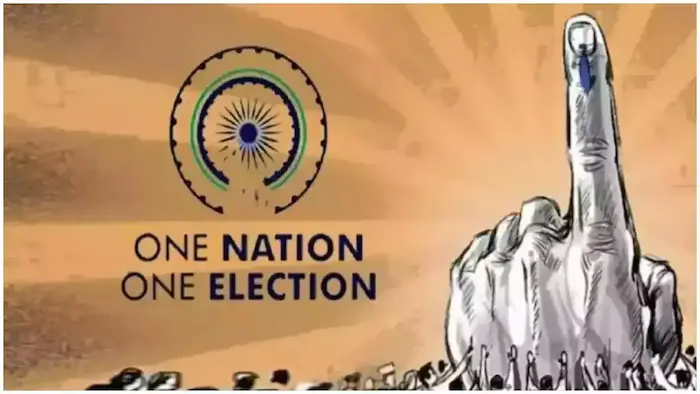
Why in News?
The Election Commission of India (ECI) has recently rolled out a series of reforms to improve transparency, voter participation, and credibility of the electoral process, while tackling challenges like criminalisation of politics, electoral finance opacity, and digital manipulation.
Key Reforms by the ECI
1. Electoral Roll Management
- Delisting 476 inactive RUPPs (Registered Unrecognised Political Parties).
- First special summary revision in 20 years for by-elections.
- Bihar special revision to address voter disenfranchisement.
- Removal of duplicate EPIC cards → unique voter IDs.
2. Technology-Driven Transparency
- ECINET: Digital platform integrating 40+ apps for electors, parties, and officials.
- Digital index cards and reports at constituency level.
- 100% webcasting at polling stations.
3. Booth-Level Improvements
- Standard photo-ID cards for BLOs.
- Limit of 1,200 voters per polling station.
4. Vote Verification
- Mandatory VVPAT slip counting in mismatch cases → ensuring verifiable audits.
Challenges in India’s Electoral Process
- Rising Election Expenditure
- Shadow financing, underreporting, black money.
- Legal limits far lower than actual expenses.
- Criminalisation of Politics
- ADR data: Large % of MPs/MLAs face criminal charges.
- Politician-criminal nexus weakens democratic credibility.
- Voter Disenfranchisement
- Missing names, bogus voting, low urban turnout.
- Internal migrants, elderly, and differently-abled face barriers.
- Freebie Politics & Populism
- Growing trend of unsustainable freebies.
- No clarity between welfare and populism → fiscal risks.
- Electoral Violence & Booth Vulnerabilities
- Voter intimidation, booth capture in sensitive regions.
- Lack of totalizer machines exposes booth-wise voting patterns.
- Technological & Cyber Threats
- Deepfakes, algorithmic bias, fake news campaigns.
- Electoral Roll Manipulation
- Duplicate voters, allegations of selective inclusion/exclusion.
- Lack of Inner-Party Democracy
- Dynastic control, opaque candidate selection.
- Parties function like family enterprises.
Steps Required to Strengthen Electoral Framework
1. Electoral Finance Reform
- Partial state funding of elections (2nd ARC recommendation).
- Public portal for real-time spending disclosures.
- Ban anonymous corporate donations.
- Bring political parties under RTI Act.
2. Promoting Inner-Party Democracy
- Mandatory internal party elections.
- Transparent candidate selection.
- Independent audits of party constitutions.
- Implement Law Commission 1999 report recommendations.
3. Digital Regulation
- Mandatory disclosure labels for political ads.
- National Deepfake Detection Cell with IITs & CERT-In.
- Real-time removal of misleading content → penalize platforms.
- Voter awareness drives on deepfakes & algorithmic bias.
4. Strengthening ECI
- Financial independence via Consolidated Fund of India.
- Regional ECI offices with permanent staff.
- Parliamentary oversight of ECI’s performance.
- Create permanent independent cadre of ECI officers.
5. Electoral Process Reforms
- Totalizer machines for mixing votes across booths.
- Strict enforcement of Model Code of Conduct.
- Shorter campaign durations → reduced expenditure & hate speech.
6. Simultaneous & Sustainable Elections
- Pilot One Nation, One Election at state/local levels.
- National common electoral roll & voter ID.
- Savings from synchronized polls → reinvest in governance.
Broader Significance
- Strengthens constitutional democracy.
- Reduces criminalisation & corruption.
- Restores public trust in institutions.
- Aligns with UN SDG 16 (Peace, Justice & Strong Institutions).
Exam Connect – Possible Questions
Prelims
- Which of the following reforms was recently introduced by the Election Commission of India?
1. ECINET platform for digital election management
2. Mandatory use of VVPAT slips in mismatch cases
3. Limiting polling stations to 1,200 votersOptions:
A. 1 only
B. 1 and 2 only
C. 1, 2, 3
D. 2 and 3 only
Answer: C. 1, 2, 3
- The concept of partial state funding of elections in India was recommended by:
A. Sarkaria Commission
B. Indrajit Gupta Committee
C. 2nd ARC
D. Punchhi Commission
Answer: C. 2nd ARC (also supported by Indrajit Gupta Committee, 1998).
- What is the purpose of using totalizer machines in elections?
A. Increase voting speed
B. Prevent identification of booth-wise voting patterns
C. Ensure remote voting for migrants
D. Replace VVPAT slips
Answer: B. Prevent identification of booth-wise voting patterns
Mains
- “Electoral reforms in India must go beyond procedural improvements to address deeper structural issues.” Discuss in light of recent reforms by the Election Commission.
- Critically analyse the challenges posed by criminalisation of politics, election expenditure, and digital manipulation in India’s democracy. Suggest institutional reforms.
- Should India adopt simultaneous elections? Examine its feasibility and implications for governance and federalism.
5. Towards Drug Free India – Governance
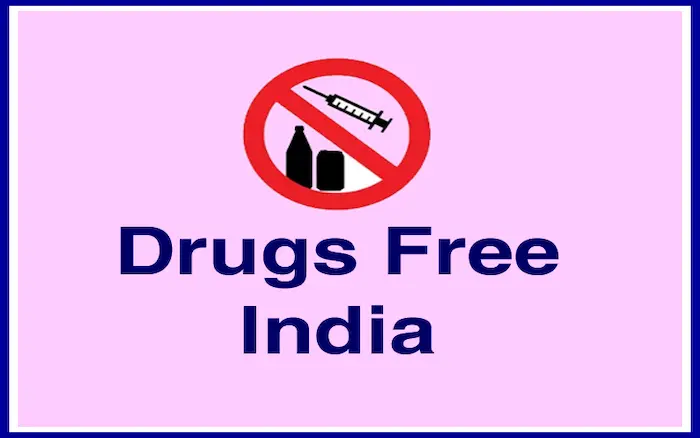
Why in News?
India continues to grapple with a rising drug abuse crisis, both as a consumer and transit hub due to its location between major drug-producing regions.
- The government launched the Nasha Mukt Bharat Abhiyaan (NMBA) in August 2020, now completing 5 years, with the aim of making India drug-free through awareness, treatment, and enforcement.
Nasha Mukt Bharat Abhiyaan (NMBA)
- Launch: 15th August 2020, by Ministry of Social Justice & Empowerment.
- Objective: Awareness, early detection, counselling & rehabilitation of drug dependents.
- Expansion: From 272 vulnerable districts → extended to all districts of India.
Three-Pronged Strategy
- Supply Control – restrict drug trafficking and illegal production.
- Demand Reduction – awareness campaigns, prevention, and youth mobilization.
- Medical Treatment – de-addiction centres, counselling, rehabilitation.
Key Achievements (2020–2025)
- Mass Sensitisation: Reached 18.1 crore people, 4.85 lakh institutions.
- Youth Mobilisation: Engaged 1.67 crore students.
- Tech Integration: Social media campaigns, apps, geo-tagging.
- Volunteer Network: 20,000+ trained Master Volunteers.
- Community Outreach: Awareness drives, pledges, counselling.
- Collaborations: Spiritual & social orgs like Art of Living, Brahma Kumaris, ISKCON.
Drug Abuse in India – Scale of the Problem
- Users: ~10 crore drug-dependent people.
- Alcohol: 16 crore users (14.6% of ages 10–75).
- Cannabis: 3.1 crore users (2.8%).
- NDPS FIRs: Highest in UP, Maharashtra, Punjab (2019–21).
India’s Geopolitical Vulnerability
- Golden Crescent (Afghanistan, Iran, Pakistan) → major opium hub affecting J&K, Punjab, Himachal, Rajasthan, Gujarat.
- Golden Triangle (Laos, Myanmar, Thailand) → major heroin hub (Myanmar = 80% global supply). Routes pass through India’s Northeast.
India is both a transit route and a consumption market.
Challenges in Drug Control – Mnemonic: DOPE
- D – Dark Net & New Substances: Online trade via crypto, synthetic drugs.
- O – Organisational Gaps: Lack of trained personnel, rehab centres, forensic labs.
- P – Poor Prevention Awareness: Weak rural & youth outreach.
- E – Exclusion & Stigma: Addiction seen as a moral failure, deterring treatment.
Way Forward – Mnemonic: SAFE
- S – Strengthen Law Enforcement
- Better implementation of NDPS Act, 1985 & PITNDPS Act, 1988.
- Modernise surveillance with AI, Big Data, drones, satellites.
- Improve inter-agency coordination.
- A – Awareness & Prevention
- Expand NAPDDR (National Action Plan for Drug Demand Reduction).
- School & university-based interventions.
- F – Focus on Supply Reduction
- Strengthen border management.
- Citizen reporting systems.
- Alternative livelihoods for illicit crop farmers (e.g., Jharkhand poppy replacement scheme).
- E – Enhance International Cooperation
- Partner with UNODC, Interpol, SAARC neighbours.
- Joint operations against cross-border drug syndicates.
Comparative Insights
- Portugal: Adopted decriminalisation model + strong rehab services → reduced addiction-related deaths.
- Thailand: Successful crackdowns but criticised for excessive policing → highlights need for balanced approach.
- India’s Path: Must balance law enforcement, health-based rehabilitation, and awareness.
Exam Connect – Possible Questions
Prelims
- Which of the following regions is known as the “Golden Crescent”?
A. Laos, Myanmar, Thailand
B. Afghanistan, Iran, Pakistan
C. Colombia, Peru, Bolivia
D. Myanmar, Bangladesh, Bhutan
Answer: B. Afghanistan, Iran, Pakistan
- Which of the following Acts forms the backbone of India’s anti-drug legal framework?
A. PITNDPS Act, 1988
B. NDPS Act, 1985
C. Drugs & Cosmetics Act, 1940
D. Both A and B
Answer: D. Both A and B
- The Nasha Mukt Bharat Abhiyaan was launched in which year?
A. 2015
B. 2017
C. 2020
D. 2022
Answer: C. 2020
Mains
- “Drug abuse is both a law enforcement challenge and a public health crisis.” Examine India’s strategy under the Nasha Mukt Bharat Abhiyaan in this context.
- Discuss the role of international cooperation and border management in curbing drug trafficking in India, with special reference to the Golden Crescent and Golden Triangle.
- Critically analyse the challenges in India’s drug control framework. Suggest reforms to balance supply reduction with rehabilitation and social reintegration.
6. Kerala: First Digitally Literate State in India – Government
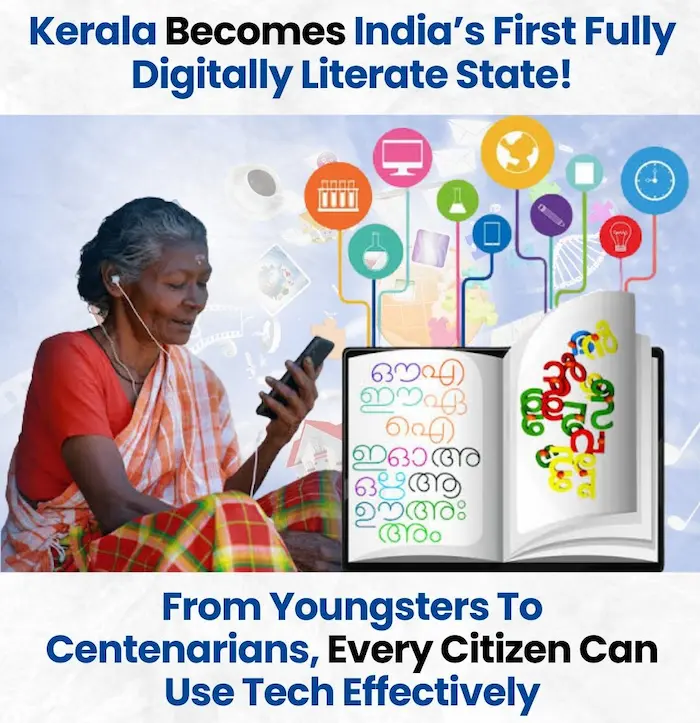
Why in News?
Kerala has become the first fully digitally literate state in India, marking a milestone in digital inclusion, governance, and service delivery. This achievement helps bridge the urban-rural digital divide in India.
Kerala’s Digital Literacy Journey
1. Digi Keralam Project
- Focus: Senior citizens, homemakers, marginalized groups.
- Strategy:
- Youth volunteers trained communities.
- K-SMART platform: Online services for inclusion & governance.
- Impact: Enhanced last-mile access to digital government services.
2. Akshaya Project (2002)
- Launched by President A.P.J. Abdul Kalam.
- Aim: Ensure at least one digitally literate member in each household.
- Role: Early enabler of IT access + e-Governance in Kerala.
Digital Literacy in India – Current Status
- Only 38% households digitally literate (Central Board for Workers Education).
- Urban: 61%
- Rural: 25%
- Huge divide → access, affordability, awareness.
Key National Initiatives for Digital Literacy
- National Digital Literacy Mission (NDLM) & Digital Saksharta Abhiyan (DISHA)
- Target: 52.5 lakh beneficiaries.
- Trained: 53.67 lakh beneficiaries (42% rural).
- Now discontinued.
- Pradhan Mantri Gramin Digital Saksharta Abhiyan (PMGDISHA)
- Focus: Rural digital literacy.
- Achievement: 6.39 crore trained (till March 2024).
- Largest digital literacy programme globally.
Significance of Kerala’s Achievement
- Model for other states → localized, community-driven approach.
- Boosts Digital India Mission goals.
- Improves service delivery → healthcare, education, e-governance.
- Enhances citizen empowerment & participation in governance.
Challenges Ahead
- Regional inequalities in digital access.
- Affordability of internet & devices.
- Cybersecurity risks & misinformation.
- Need for digital skilling beyond basic literacy → advanced tech (AI, coding, data literacy).
Exam Connect – Possible Questions
Prelims
- Which state was recently declared India’s first fully digitally literate state?
A. Karnataka
B. Kerala
C. Tamil Nadu
D. Himachal Pradesh
Answer: B. Kerala
- The Akshaya Project, aimed at digital literacy, was launched in which year?
A. 2000
B. 2002
C. 2005
D. 2010
Answer: B. 2002
- Which of the following is the largest digital literacy programme in the world?
A. NDLM
B. DISHA
C. PMGDISHA
D. Digital India Abhiyan
Answer: C. PMGDISHA
Mains
- “Kerala becoming the first digitally literate state is a milestone in India’s journey towards inclusive digital governance.” Discuss its significance and replicability in other states.
- Critically evaluate the role of national schemes (NDLM, DISHA, PMGDISHA) in bridging the digital divide in India. What gaps still persist?
- Digital literacy is necessary but not sufficient for true digital empowerment. Analyse this statement in the context of India’s digital governance initiatives.

